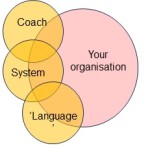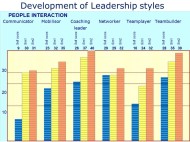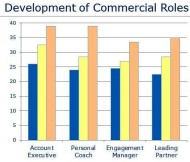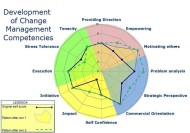PERSONALITY ASSESSMENT FOR COACHING
After the computerization of personality questionnaires, the role of the occupational psychologists was taken over by recruiters that by interpreting the assessment results could advice the employer.
But also a new use of personality assessments started to get in use.
Coaches had found out that an assessment gave them to possibility to get to know their clients rather quickly. However, taking a snapshot of someone's personality is riskfull, because it is only a snapshot. Especially when the client comes to you because he/she wants to develop and change.
A missed connection
But a personality assessment is not an instrument that will help you during the coaching process. An important question is what the candidate will be able do with the inventorized information.
Will it give him/her direction for the steps he/she must take?
A coaching process is, by definition, a process of realising personal development and change! The most odd example is a competence assessment, measuring the fitness of a person who starts an education for acquiring this competence.
My feeling is that the educators/coaches have missed a connection here.
They should ask themselves: will the applied instrument help out during the coaching process?
Babylonic Language Confusion
Since the beginning of this century, when coaches discovered psychometry many systems have been built that support the coaching of individuals and teams.
Unfortunately these systems tend to use different conceptual frameworks. In this way both international systems like TMA, Management Drives, Real Drives, etc., as well as the many local systems created their own vocabulary.
And, an European standard like Entrecomp has great difficulties in getting accepted.
Such organisations can feel hampered and closed in by the vocabulary of the coaching system and too dependant of the coaches of the educational organisation.
LDpe chose a 'right connection' and decided to build a 'connecting toolbox'. A toolbox that gives direction for accelerated growth.
For the design of the toolbox, we found it relevant:
· that a formal measurement of a
participant’s personality should be used;
· such a measurement method must be
worldwide recognized as a ‘good’ method;
· that the measured results should make
the starting point for a person’s reflections;
· that the LDT-vocabulary relates to well-
known leadership and professional
concepts;
· that the constructs defined, in a straight
way, relate to both the concepts chosen
and the scores of the formal
measurements.
Essential for the deepening insight of the participant in his/her own personality and for the continuous reflection was the development of a clear and comprehensive vocabulary, a 'structured language'.
The LDT's vocabulary, the concepts and notions of the language are defined and structured according the most used and accepted models and concepts in the domains of leadership and psychology.*)
The LDT reports help the participant both with keeping an overview of the development of the leadership style portfolio and his/her conscious steps for achievement. The reports help the participant to both having the overall concept in mind and, on a sub-concept level notify the items for his/her personal development.
*) We have, as much as possible, related the LDT to the world's leading theories.
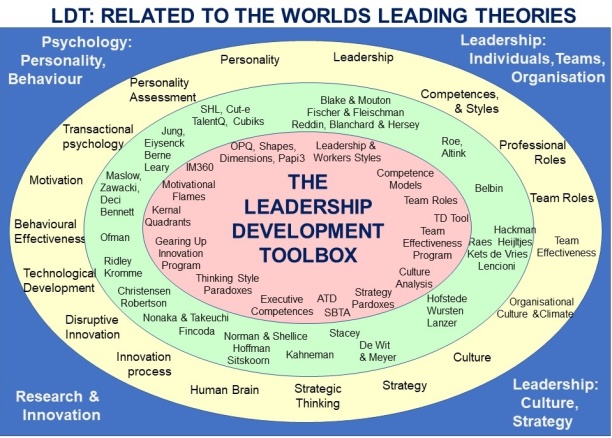
De LD-Toolbox gives direction to your personal development
The simulation module provides you with a personal development scenario
The simulation module provides you with a personal development scenario
The LDT Simulation module helps you to see what happens if you would change certain behavioural preferences.
Indeed, it is possible to adapt behavioural preferences and by that realise a broader style portfolio, which enables you to handle and manage a larger variety of situations.
The simulation report enables you to deeply analyse the effects of the proposed adjustments. This then can become the base for your personal development plan (PDP).
You will understand that deeply engrained behavioural patterns maybe difficult to change, but you will be able to realise it with a strong will and support from the people around you. Especially when you are conscious of the possible result.
To the left you see an example of such development scenario's
Below the effects in certain areas like certain leadership styles, commercial roles and change management competencies.
Summary about the use of personality measurement in coaching
- Most systems for personal development use only a 'snapshot' in the beginning of a coaching process. This does not give any support during the process;
- Most often the systems do not show clearly what really has been measured but mixture the measurement results with calculations from the coaching system; this results in the fact that it will be more difficult to link to other and more generally used methods and models; one becomes 'closed in' in the coaching system and dependant of the supplier's coaches;
- The LD-Toolbox has been designed for open connection to other models and concepts. Because of that it is possible to quickly integrate with new scientific insights like progress in brain research, new motivation insights and international competency standards; Through the open internal structure of the LDT, new concepts and models can easily be linked to the LDT;
- Besides, the LD-Toolbox is the only system in the world with a simulation module which offers it's participants a perspective for future development and by that a possibility for accelerated development.









